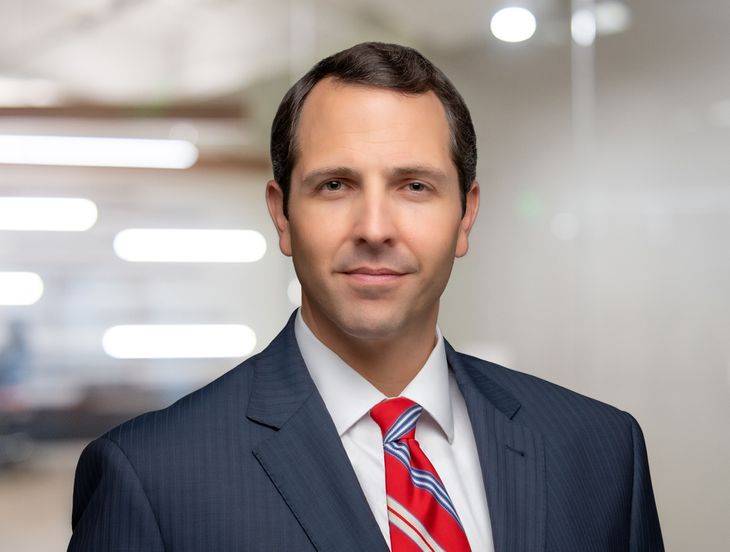Rallying The Troops: Tips For Increasing Healthcare Employees’ Participation in Vaccination Programs
Insights
1.29.21
Like many other healthcare companies, nursing homes and assisted living facilities have been ravaged by COVID-19. A recent review of only 39 states found approximately 569,000 to 616,000 COVID-19 cases and 91,500 deaths were reported among long-term care facility residents and staff members in the US, per the CDC. This accounts for 6% of total state COVID-19 cases and 39% of deaths.
While some of these cases may have been contracted simply by healthcare employees engaging in normal activities, others have unfortunately stemmed from workers contracting COVID-19 while engaging in high risk off-duty conduct, then bringing the virus back into the facility. For example, in Washington state, workers at assisted living facilities attended a 300-guest wedding in early November. Multiple staff members at the workers’ facilities later tested positive for COVID-19. Unfortunately, those workers went to work while still asymptomatic and came in contact with the facilities’ high-risk residents. Unsurprisingly, COVID-19 outbreaks were reported among residents and at least seven residents have died due to COVID-19 complications since that time.
Incidents such as this underscore the importance of healthcare workers who regularly interact with those most vulnerable to COVID-19 getting vaccinated. While employers can institute rigid workplace guidelines to prevent the spread of the virus, the options are more limited when it comes to regulating employees’ off-duty conduct. However, that is not to imply no such rules can be implemented. Rather, employers must be aware of not violating federal labor laws or other local laws when enacting rules of that nature. For more information on implementing rules regarding off-duty conduct intended to mitigate the spread of COVID-19, please see Fisher & Phillips’ legal alert on this issue.
Fortunately, in what some doctors and scientists have called a “miracle,” multiple companies have developed, and mass produced, a vaccine to COVID-19 in under a year—besting the previous record for developing a vaccine by several years. If healthcare workers are vaccinated, the chance of their off-duty conduct endangering residents is drastically reduced. Additionally, the danger to healthcare workers in providing care for COVID-19 positive residents is also lowered. Getting vaccinated seems to be a win-win for employees of nursing homes and assisted living facilities.
Healthcare Facilities Facing A Hesitant Workforce
Yet a December 2020 survey found that 29% of people across all industries would not take the vaccine. The primary reasons listed by those who stated they would not take the vaccine were concerns about side effects, lack of trust in its safety and effectiveness, and fear over the role of politics in the development process.
And, unfortunately, this reticence has carried over into the healthcare industry. News agencies are reporting that, although the nation is more than seven weeks into the effort to vaccinate healthcare and frontline workers, some healthcare facilities are seeing as much as 80% of staff decline to be vaccinated.
Nursing homes and assisted living facilities are among those given priority for vaccinations due to the devastating impact COVID-19 has had on their residents. But these facilities are not immune to the overall trend of workers refusing to be vaccinated. In West Virginia, only about 55% of nursing home workers agreed to the shots when they were first offered in December. Ohio’s governor estimated that his state’s nursing home workers are even less willing to be vaccinated, with only 40% getting the shots. South Carolina’s healthcare workers are accepting the vaccine at an even lower rate. As early January, just under 71,000 of the 350,000 South Carolinians (or 20%) who qualify for the state’s initial vaccination stage, which encompasses frontline healthcare workers and long-term care facility residents and staff, had received a first dose of vaccine.
Both Ohio and South Carolina’s governors have not taken healthcare workers’ refusal to get vaccinated lying down. Governor Henry McMaster of South Carolina told those who qualify for the initial vaccination stage they have until January 15 to get the vaccine or make an appointment to do so, otherwise they “will go to the back of the line” when it comes to receiving the vaccine. Similarly, Governor Mike DeWine of Ohio warned healthcare workers that if they did not receive the vaccine at this time, “that train may not be coming back for a while.”
The common refrain among those that refuse the vaccine? Too little is known about the vaccine and they do not want to be guinea pigs. One cardiothoracic surgeon who refused the vaccine stated, “At the end of the day, as a man of science, I just want to see what the data shows. And give me the full data.” An ICU nurse decided against getting vaccinated at this time “because of the unknown long-term side effects.” She added that “at least half” of her coworkers shared the same sentiment.
While recent EEOC guidance has paved the way for nursing homes and assisted living facilities to make employee vaccinations mandatory, such an approach may significantly impact employee morale and have other unintended consequences. Further compounding the analysis, staffing in the elderly services industry has remained a challenge throughout most of the pandemic and will likely continue to be an issue as the country deals with inevitable surges of the virus. Consequently, many nursing homes and assisted living facilities may understandably be reluctant to mandate vaccinations for fear that employee unrest could exacerbate critical staffing issues.
Steps You Can Take To Boost Vaccinations
There are, however, steps healthcare employers can take to incentivize employee vaccinations. A resounding theme of many recent surveys and interviews is that individuals want more information about the new vaccine. Given this, one of the most important steps employers can take to increase participation in vaccination programs is to launch a substantive information campaign (including informational posters or flyers, PowerPoint presentations, webinars, etc.) which provides plenty of information to help educate employees. A resource center or document which compiles relevant information in one location and includes FAQs as well as links to the CDC and related state websites may be a particularly useful tool.
Having company executives and other high-level managers get publicly vaccinated may also help decrease skepticism about the vaccine and motivate more employees to participate. Hospitals have reported that the biggest confidence booster among staff in the efficacy of the vaccine was watching other staff members and leadership receive the vaccine. One chief medical officer of a hospital estimated that the “first few hundred that we had created another 300 that wanted the vaccine.”
Another way employers can increase employee participation is to make getting vaccinated easy and attractive. For example, offering on-site vaccinations, if possible, and paying employees for the time spent getting vaccinated. Alternatively, provide employees with paid time off (PTO) to cover off-site vaccinations, and offer additional PTO in the event employees experience any side effects. Paying for all costs associated with the vaccination (to the extent not already covered by insurance) should help increase employee participation.
Employers may also consider offering incentives above and beyond simply paying for the time and costs associated with getting vaccinated. For example, some employers are offering incentives such as cash, gift cards, additional PTO, additional contributions to HSAs or similar benefit plans, or entry into a raffle to employees who get vaccinated. Additional PTO may be particularly attractive to employees of nursing homes and assisted living facilities given that many of them have frequently been required to work extra shifts and extra days throughout the pandemic due to persistent staffing challenges. Team-focused incentives, such as providing a prize to the shift or the department with the highest participation rate, is another potential option. As we have previously cautioned, however, employers who offer any sort of incentives to increase participation in employee vaccination programs will need to consider and ensure compliance with rules governing employer-sponsored wellness programs as well as IRS regulations.
Finally, healthcare employers may consider relaxing PPE requirements for employees who have been vaccinated when feasible and when such employees are not providing direct resident care. Less restrictive PPE may be a welcomed reprieve for many and may also signal light at the end of the tunnel, which can boost employee morale.
Conclusion
We will continue to monitor developments regarding the COVID-19 vaccines and related employment questions that arise in the healthcare industry. Make sure you are subscribed to Fisher Phillips’ alert system to get the most up-to-date information. If you have questions about your vaccine policies and procedures, visit our Vaccine Resource Center for Employers or contact the authors, your Fisher Phillips attorney, or any attorney on our FP Vaccine Subcommittee.
Related People
-
- Laurel K. Cornell
- Regional Managing Partner
-
- Phillips L. McWilliams
- Partner

